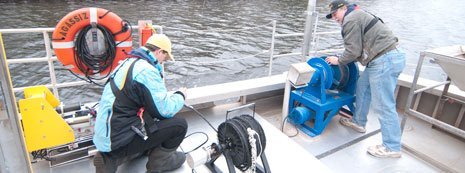Title
Quasi-static cyclic testing and analytical investigation of steel plate shear walls with different post-tensioned beam-to-column rocking connections
Document Type
Article
Publication Date
2-28-2019
Abstract
Self-Centering Steel Plate Shear Walls (SC-SPSW) have been recently proposed to help achieve possible immediate occupancy following an earthquake for buildings located in regions of high seismicity. For this purpose, like other recently developed low-damage systems, SC-SPSWs seek to: (1) eliminate damage to the surrounding gravity frame of the seismic force resisting system; (2) provide frame recentering, in order to return the building back to its pre-earthquake near vertical alignment, and; (3) concentrate hysteretic energy to replaceable elements, providing rapid and practical reparability.
A testing program was conducted investigating the quasi-static cyclic behavior of SC-SPSW systems detailed with three different beam-to-column connections and two SPSW infill configurations. Specimens consisted of one-third scaled single-bay three-story frames. Results are presented for SC-SPSWs detailed with three different post-tensioned (PT) beam-to-column rocking connections that: either (1) rock about the top and bottom beam flanges; (2) rock about the top beam flanges only referred to as the NewZ-BREAKSS connection, or; (3) rock about the beam centerline. The latter two connections were investigated to mitigate floor system damage due to PT boundary frame expansion (i.e., beam-growth) that occurs with the first mentioned rocking connection detail. Experimental and numerical results are presented for both a solid infill web plate and infill web strip configuration. Results presented show that solid infill web plates provide some additional strength and energy dissipation due to their strength in compression and affects frame recentering for quasi-static loading conditions of progressive increasing displacement cycles. In contrast, infill web strips are essentially tension-only and have the benefit that they are not susceptible to tearing from the boundary frame and does not affect frame recentering. Numerical results show that the compression strength of the solid infill web plate in these experiments was approximately 10 percent that of the yield strength of the infill web plates in tension. Furthermore, lessons learned from this testing program are presented that show that for a multiple actuator configuration along the height of a multi-story SPSW specimen, a top level displacement control with force control of the lower actuators is necessary to avoid undesired actuator interaction along the frame heights.
Publication Title
Engineering Structures
Recommended Citation
Dowden, D.,
&
Bruneau, M.
(2019).
Quasi-static cyclic testing and analytical investigation of steel plate shear walls with different post-tensioned beam-to-column rocking connections.
Engineering Structures,
187(15), 43-56.
http://doi.org/10.1016/j.engstruct.2019.02.048
Retrieved from: https://digitalcommons.mtu.edu/cee-fp/80


Publisher's Statement
© 2019 Elsevier Ltd. Publisher's version of record: https://doi.org/10.1016/j.engstruct.2019.02.048